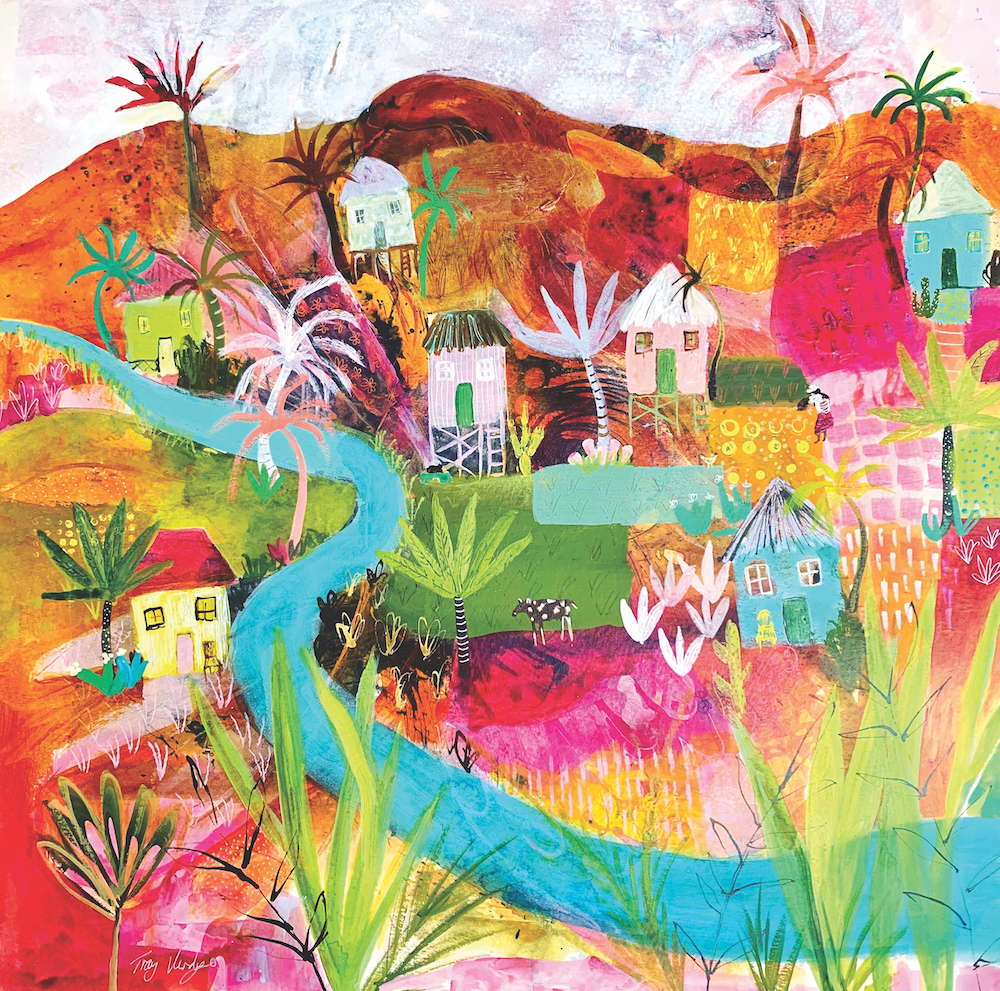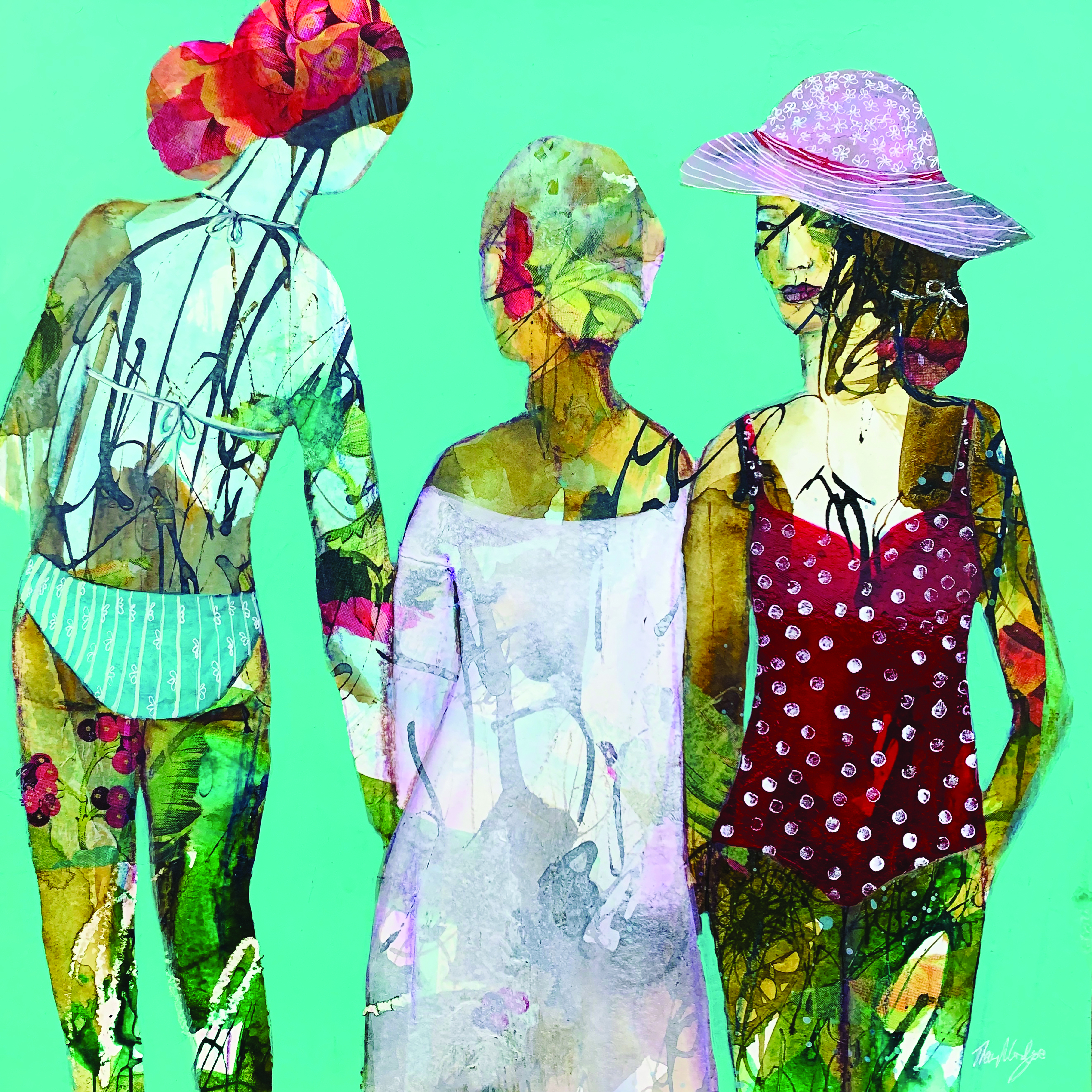
Featured Artist: Tracy Verdugo
Tracy Verdugo
S&H editor Ben Nussbaum spoke with Australian artist Tracy Verdugo about evolution, Embracing the Contrast, and taking a break from color.
You’ve said it took about ten years for your work to start to match your vision for what you wanted. Tell me about that. When I started I was 33, and I had two little girls at the time. … When you start a practice and you don’t have the time to really apply yourself, it stretches out over a longer period.
For all that time, I was really actively looking out at the world and thinking, “I’m drawn to that, I’m drawn to this. I’d love it if my work were a little more raw or a little more abstract.” But I didn’t have the tools yet because I wasn’t putting the time in to develop the skills to get to where I wanted to get to.
We live in a small town, a thousand people in our town, a little village by the sea. We have a winter arts festival every two years. So way back in the beginning, when I started painting, around 2000, I would do a solo exhibition for this festival every two years. I can mark my own development by looking at each exhibition that I did. In the beginning it was very naive. I just didn’t know how to use the materials that well.
About 2008, I was starting to feel like I was taking the inspiration from our area, the ocean, the bush, the marks on the beach at low tide that the little clams make, and I’m starting to develop a more abstract style and I’m so proud of my exhibition. This lady came in and had a real quick look around, and then she left, but then she came back in.
She said, “I just have to tell you. I’m sorry, I really like your old stuff better than your new stuff.” She liked the more folk art, the little birds dancing through the garden. And here I am thinking my art is becoming more sophisticated. And it was okay. I said to her, “That’s fine! But I can’t stay in one place, I need to move as I’m developing. I need to move towards what I feel is the right way for me to create.” And that process is ongoing, because we’re developing all the time internally. It’s not a static thing.
“What I’ve come to realize when I’m teaching is that art and creativity in general is a metaphor for everything else going on in your life. It’s a really great mirror. If you come up against anything in your art, inevitably you can look at that in your life as well. If I have a student who is constantly comparing her work to other peoples’ and she’s constantly stuck because she thinks theirs is better or whatever, that’s a bigger thing she might need to look at. I’ve come to see that link between our spiritual journey, our life journey, and our creative journey.” —Tracy Verdugo
Tell me about working based on intuition while also incorporating a more critical, cerebral aspect. How do you find a balance?
It’s a huge question. In 2011 I had a bit of a breakthrough with my own work when I went to an intuitive painting workshop. There were some technical things I learned that really helped me, but the idea that you didn’t have to have anything in mind when you approach a canvas, that you can begin to make marks and you can, in essence, have a conversation with the work while it’s developing and see what it might want to become … it’s such an interesting process and also kind of exhausting. You have a million possibilities, and then you make another mark and it changes again.
For myself, I’ve developed a way to balance out that intuitive side of things with a little more structure. I have some tools that I use that I also share with my students. One of them is called Embracing the Contrast. The idea is that there’s kind of a balance in life and we can try to achieve that balance on the canvas as well. If the canvas feels very delicate, what’s the opposite to delicate? Well, bold. So it might be like a big stroke of black paint. Or there might be a lot of curvy things happening. Well, what’s the opposite of that? It might be geometric.

You use so many colors. I imagine that raises the degree of difficulty, since there’s a lot of interaction to manage. Are you ever tempted to simplify?
Yes, yes. And sometimes I do. I actually have to. Because when I’m painting with a whole bunch of different colors, it really is like a puzzle. There’s a lot of push and pull, covering up, bringing back, scraping back. You’re forever figuring stuff out.
Sometimes I’ll just take some black ink and water and do some really simple monochromatic pieces that make me feel more rested. It’s kind of like a little solace amidst all the crazy color. But I always come back to color.

With abstract paintings in particular, do you ever say, “This just didn’t work,” and throw something away?
Rarely. Very, very rarely. Up until a couple of years ago, I hadn’t at all.
I’m really big into reinventing. I’ll always find a way—I could cut it up for collage, I could tear it and use pieces of it in other artwork. Sometimes I just put it away and bring it out like five years later when I know more and I’ve learnt more. It helps that I have a studio so I have places to put stuff!
I love to reinforce that with my students—don’t give up on a piece. It can just be in the works; it can be in progress. And you might not know what to do with it just now, but you’ll surprise yourself.









